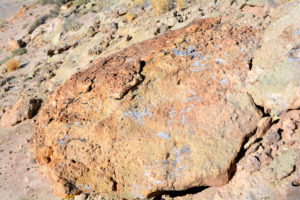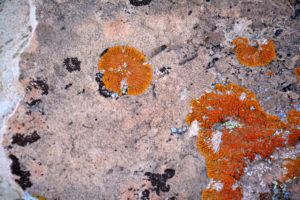Science Report #2 for October 6th
This report was filed by Paul Sokoloff, Mars 160 Science Lead for Lichens
MA160 Biology Program: Lichen Biodiversity at Martian Analog Sites
In many ways lichens make better astronauts than humans do. Though they seem humble and unassuming, these hardy organisms are tough enough to thrive in some of Earth’s harshest environments, from hot deserts to our coldest polar regions. Some species have even survived exposure to Mars-like environments and the exterior of the International Space Station.
Lichens are composite organisms made of two microbial partners. They are comprised of a fungus paired up with an alga, a cyanobacterium (blue-green algae), or in some bases, both algae and cyanobacteria. The fungus houses and protects the photosynthetic partner in return for energy in the form of sugar. Resistant to UV radiation and desiccation, lichens are ecologically important in the extreme environments selected as planetary exploration analogs.
At both MDRS and FMARS lichens grow in rock and soil and exchange their photosynthetic partners with endolithic colonies of algae and biological soil crusts, often altering their substrate. Lichens are also picky about where they live, with different species often exclusively growing on different types of rock. Due these characteristics, and their relatively conspicuous nature, the search for lichens are an excellent terrestrial analog for training crews in the search for biomarkers on Mars.
Preliminary surveys have recorded 182 lichen species on Devon Island (where FMARS is located), 61 species from eastern Wayne and Emery counties, Utah (MDRS is in Wayne County), and 16 species from the deserts surrounding MDRS. During the MA160 mission, the crew will conduct a thorough inventory of lichen biodiversity and substrate ecology at both stations, undoubtedly adding new species to these totals. This will contribute valuable information on lichen biodiversity to earthbound scientists while simultaneously giving the crew to opportunity to develop the astrobiological techniques that will be needed by future Martian explorers.

The Crack Lichen (Acarospora strigata) is a common white crust-like lichen commonly found around MDRS.

Polysprorina gyrocarpa is a lichen originally described from the San Rafael Swell near MDRS.

The Desert Firespot Lichen (Caloplaca trachyphylla) can be found growing in shaded, highly-perched rocks in the deserts surrounding MDRS.



